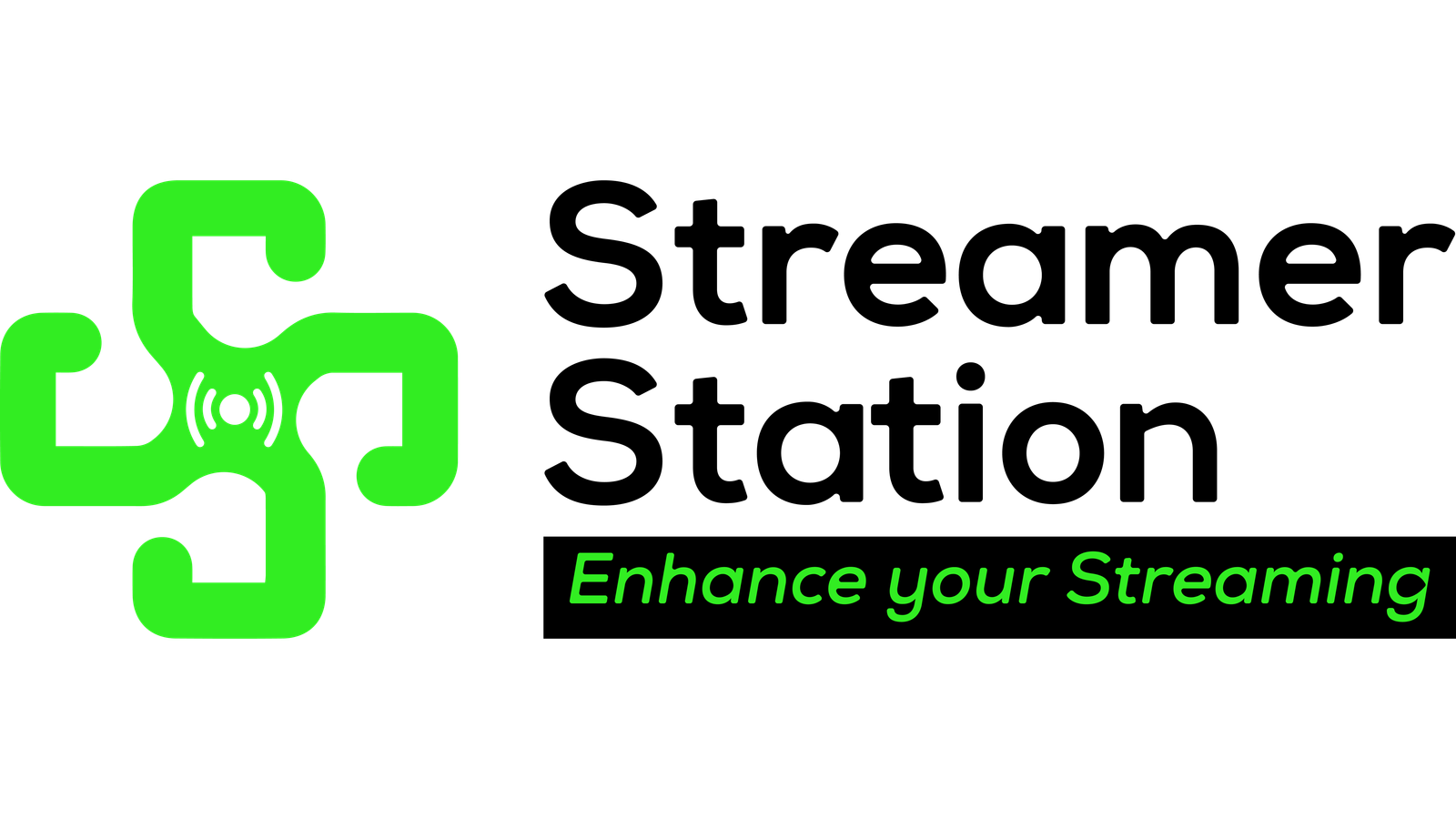How to Attach a Stream Pack on Twitch
Quick Guide for Stream Pack Attachment
This guide provides step-by-step instructions to easily attach and configure a stream pack on Twitch, enhancing your channel's visuals and user experience.
Content
Extract Your Stream Pack
To Set Up Logo/PFP
To Set Up Banner
To Add a Little Extra Personalization
To Set Up Panels
To Set Up Game Screen
To Set Up Game Overlay
To Set Up Background for Overlay
To Set Up Screens
To Set Up Alerts
To Set Up Stream and go Live on Twitch
1. Extract Your Stream Pack
Open your Stream pack and make sure Alert, Overlay, Panels, PFP & Banner, Screen’s folder are there.
2. To Set Up Logo/PFP
- Go to Twitch.tv and log in to your account.
- Click on your “Profile Picture” then click on “Settings.”
- Under the “Profile Picture” section, click on the “Add Profile Picture” button.
- In the “File Explorer” window, locate the folder named “PFP or Banner.”
- Select the file named “PFP” and then click “Open” to upload.
- Click “Save” to add the profile picture.
3. To Set Up Banner
- In “Settings” under “Profile Banner”, click on “Update.”
- In the “File Explorer” window, locate the folder named “PFP or Banner.”
- Select the file named “Banner” and click “Open.”
4. To Add a Little Extra Personalization
- Click on your profile picture and go to “Creator Dashboard.”
- Under “Settings”, click on “Channel.”
- Click on “Brand.”
- Under “Profile Accent Color”, you can select a color to suit your color theme.
5. To Set Up Panels
- Click on your profile picture then click on “Channel.”
- In “Channel” go to the “About” section.
- Click on the “Edit Panel” toggle to edit the panel.
- Then click on the large “+” button.
- Click on “Add a Text or Panel Image.”
- Click on “Add Image.”
- In the “File Explorer” window, locate the folder named “Panels.”
- Select your desired Panel Image and click “Open.”
- Then click “Done” to add that Panel.
- You can Add Links and Description also.
- When done, click on the “Submit” button.
- Scroll up and switch “Off” the “Edit Panel” toggle.
6. To Set Up Game Screen
- Open OBS Studio.
- Rename your Scene to “Game Screen.”
7. To Set Up Game Overlay
- In “Sources”, click on “+” then select “Media Source.”
- Name your source “Game Overlay.”
- Make sure you checkmark the “Loop” option.
- Click on the “Browse” button.
- In the “File Explorer” window, locate the folder named “Overlays.”
- Select the file named “Game Overlay.”
- Scale and position the “Media Source”.
- In “Sources”, click on “+” again then select “Window Capture.”
- Name your source “Window Capture.”
- In “Properties” select the “Window” you want to show on stream. Click on “OK.”
- In the “Sources” box, bring the “Window Capture” below “Game Overlay.”
- Scale and position your Window to lay just edge to edge with the Game Overlay.
- crding to the size of your chat box then click on “OK.”
- In the “Sources” box, bring chat down, just above “Chatbox.”
- Position and scale your chat to lay behind the chatbox.
8. To Set Up Background for Overlay
- In “Sources”, click on “+” again then select “Image.”
- Name your source “Overlay Background.”
- Make sure you checkmark the “Loop” option.
- Click on the “Browse” button.
- In the “File Explorer” window, locate the folder named“Overlays.”
- Select the file named “Overlay Background.”
- In “Sources”, bring the “Overlay Background” down to last.
- Scale and position the “Background Image” to fit the whole screen.
9. To Set Up Screens
- To Set Up Starting Soon Screen
- Create a new scene by clicking on “+” in the “Scenes” section.
- Name your scene “Screen Starting Soon.”
- In “Sources”, click on “+” then select “Media Source.”
- Name your source “Starting Soon.”
- In the “File Explorer” window, locate the folder named “Screens.”
- Select the file named “Starting Soon.”
- Make sure you checkmark the “Loop” option.
- Scale and position the media source if you want.
- To Set Up Ending Soon Screen
- Create a new scene by clicking on “+” in the “Scenes” section.
- Name your scene “Screen Ending Soon.”
- In “Sources”, click on “+” then select “Media Source.”
- Name your source “Ending Soon.”
- In the “File Explorer” window, locate the folder named “Screens.”
- Select the file named “Ending Soon.”
- Make sure you checkmark the “Loop” option.
- Scale and position the media source if you want.
- To Set Up Be Right Back Screen
- Create a new scene by clicking on “+” in the “Scenes” section.
- Name your scene “Screen Be Right Back.”
- In “Sources”, click on “+” then select “Media Source.”
- Name your source “Be Right Back.”
- In the “File Explorer” window, locate the folder named“Screens.”
- Select the file named “Be Right Back.”
- Make sure you checkmark the “Loop” option.
- Scale and position the media source if you want.
- To Set Up Intermission Screen
- Create a new scene by clicking on “+” in the “Scenes” section.
- Name your scene “Screen Intermission.”
- In “Sources”, click on “+” then select “Media Source.”
- Name your source “Intermission.”
- In the “File Explorer” window, locate the folder named “Screens.”
- Select the file named “Intermission.”
- Make sure you checkmark the “Loop” option.
- Scale and position the media source if you want.
10. To Set Up Alerts
- Go to Streamlabs again.
- In “Dashboard”, click on the “Alert” box.
- Here you can set up alerts for multiple occasions.
- Go to “Global Editing.”
- Here you can configure and apply generic settings to all Alerts.
- Under the “Font Setting” section, you can set up the font in which the alert message will be.
- Under the “General” section, you can set up “Layout and Timings” of alert.
- Under the “Animations” section you can configure the Alert (in and out) animations and the alert text animation.
- When done, you can click “Apply” to all alerts and the setting will apply to all alerts.
- In the sidebar, you can customize a specific alert like “Follows.”
- To setup alert graphics go to “+” then click on the “Upload” icon.
- Under “Image Gallery”, click on “Uploads.”
- Then click on “Drag & Drop Upload.”
- In the “File Explorer” window, locate the folder named “Alerts.”
- Select your desired file. (File Should be in .GIF format.)
- Once the file is loaded click on the imported file and click on “OK.”
- Configure the alert to your liking and click on “Save Setting.”
- You can also click on “Preview” to preview the alert.
- Do the same for the other Alerts as well.
- Once done customizing all alerts, click on “Click to Copy Widget URL.”
- On popup, click on “Copy.”
- Once copied, open OBS Studio and go to the scene you want to set up the alert in.
- In “Sources”, click on “+” again then select “Browser.”
- Name your source “Alert Box.”
- In “Properties”, paste the link copied from streamlabs.
- Set the width and height according to the size of your Alert then click on “OK.”
- Position and scale the Alert Box to where you want to show the alert at.
- Go to Streamlabs again to test the “Alert. ”
11. To Set Up Stream and go Live on Twitch
- Open OBS Studio.
- Click on “Setting.”
- Under Setting, go to “Stream” found in the sidebar.
- Click on “Services” to open up a dropdown.
- From the dropdown menu select “Twitch.”
- Now click on “Stream Key.”
- To get the stream key go to Twtich.tv
- Click on your “Profile Picture” then click on “Creator Dashboard.”
- Under “Creator Dashboard”, then click on “Setting.”
- Under “Settings”, click on “Stream.”
- Under “Stream Key & Preferences”, find “Primary” Stream Key.
- Click on “Copy” to copy the key.
- Go back to OBS Studio and replace the stream key with one you just copied.
- Click “Apply” then click on “OK.”
- Now click on “Start Streaming.”
- Now go to your channel on Twitch and verify that the Stream is live.


